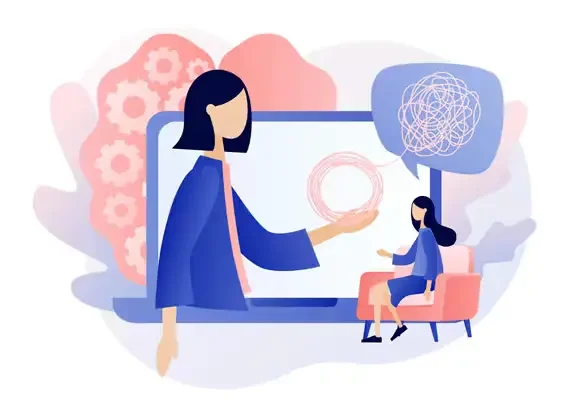
April 6, 2021
The mental health crisis in the United States has long been brewing with known barriers to care, including limited access, affordability, and stigma. In 2017, well before the COVID-19 pandemic, a quarter of adults with mental illness reported unmet needs for mental health treatment, and 60% of young people with major depression did not receive treatment.
Over the past year, the pandemic's prolonged and wide-spread isolation has amplified both the mental health crisis and the challenges of treating chronic diseases. The inter-relationship between mental health and chronic diseases has only become more evident as Americans find themselves shouldering the stress and anxiety of new realities like social distancing, shelter-in-place orders, unemployment, and illness.
What has emerged to help fill the gap of unmet needs - and at a faster pace - are digital health tools and services that help Americans reclaim their health from the safety of their homes. With the global digital healthcare market projected to grow from an estimated $106 billion in 2019 to over $639 billion in 2026, the role of digital health and innovation is necessary and full of opportunity during a time of great need.
Now More than Ever, Mental Health Relies on Digital Health -- Mental illnesses are common health conditions in the US - one in five Americans experiences mental illness each year, and more than 50% will be diagnosed with a mental illness or disorder in their lifetime. Pre-pandemic barriers to finding support may have included limited availability, such as distance, waitlists, and cost, as well as stigma around seeking and receiving mental health treatment. Some common alternatives to in-person appointments included telephone services and crisis lines, patient information websites, and self-help books.
During the pandemic, the sense of urgency and need for mental health support has risen exponentially. In lockdown life, symptoms of anxiety and depression have increased, as have suicidal ideation and substance abuse. Reduced or suspended in-person appointments with primary care and specialist doctors lead patients to seek more responsive, accessible alternatives. Apps and services with AI, chat, text, and video calls have grown in popularity and acceptance, particularly as health plans roll out better coverage or their own platforms and offerings to meet the demand surge.
The role of digital health in the mental health crisis of 2021 is pivotal and growing.
Managing Chronic Illness Remotely with Digital Health -- Chronic diseases affect six in ten Americans and are the leading cause of death and disability in the US. While chronic diseases often require regular, proactive management, the pandemic has led to the delay or avoidance of both routine and urgent healthcare visits. In a CDC survey carried out last year, just over 40% of adults reported avoiding seeking medical care because of fears around the pandemic.
Much like the push to digital interventions seen in the mental health space, gaps in the treatment and management of chronic illnesses are being filled through digital health offerings. Continuing care for leading conditions like heart disease, cancer, and diabetes can continue virtually with specialty apps, online support communities, and telehealth appointments. Digital care and monitoring can help keep patients and their healthcare providers connected from the early stages of a diagnosis to post-surgery recovery at home, monitoring risks and complications as if a patient was admitted.
While the downsides of delaying routine imaging and tests will be observed in diagnosis statistics for years to come, the role of digital health technology has emerged as a lifeline for patients with chronic conditions that may also put them at greater risk of COVID-19.
Digital as the Health Equalizer -- The interrelationship of chronic illness and mental health can be a two-way street. People with a medical illness or condition are more likely to suffer from depression, and the risks of developing some illnesses are inherently higher in people with depression. Access to digital health interventions is critical for patients dealing with mental health and chronic illnesses alike.
Though the pandemic has led to increases in the number and severity of mental health struggles people face overall, it has also cracked open the ability to serve patients through new and expanding digital health solutions. The ability for digital health to reach farther than the traditional healthcare system creates opportunities to help underserved and marginalized patients, including BIPOC and LGBTQ+ communities. These communities faced healthcare disparities long before COVID-19 due to inequalities across health-determining factors like economic stability, neighborhood location, and education. And these disparities are how showing racial and ethnic minorities are disproportionately affected by COVID-19 today. But an app, eLearning module, or video visit can help level the field in ways that the traditional healthcare system has overlooked for far too long.
The pandemic has spotlighted the traditional healthcare system's cracks and failures, forcing patients and practitioners to adapt to a new, digital standard of care. The creativity and innovation of health tech producers, investors, and leaders can continue to scale and expand digital health's wide-reaching opportunities to improve health and save lives. Even in the face of inequality and a global pandemic, digital health can bring care home to anyone.

Dominick Kennerson,
Global Head, G4A Digital Health